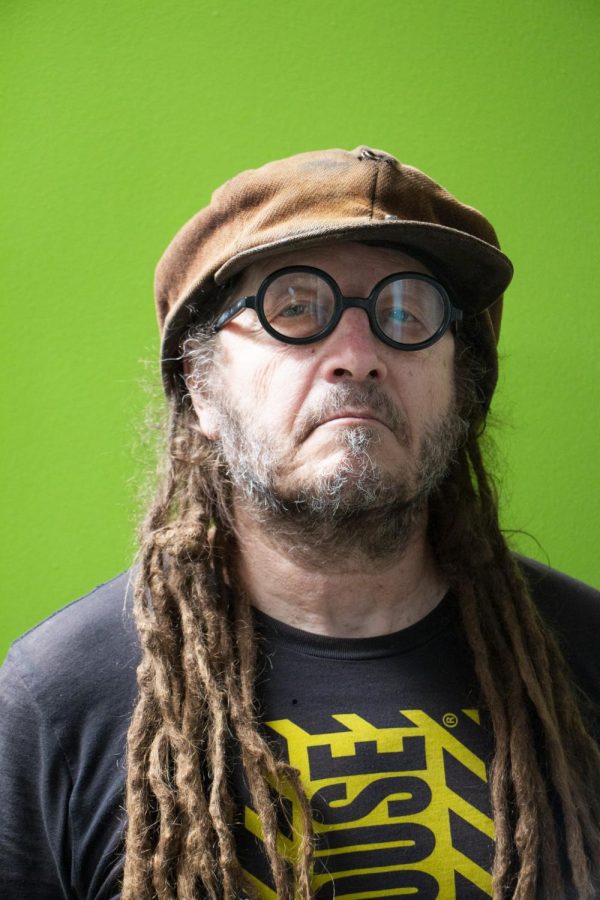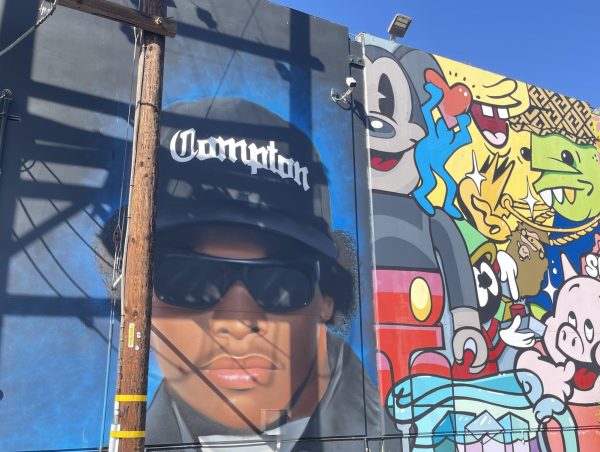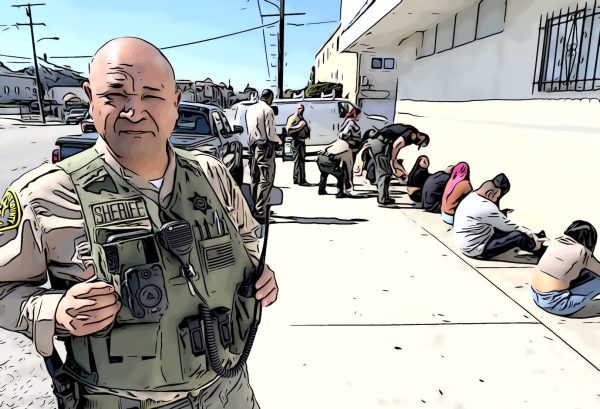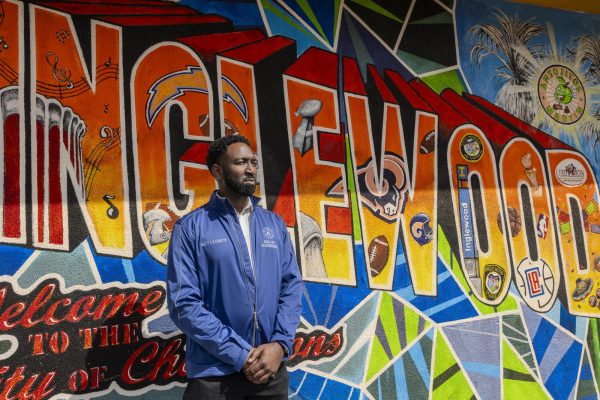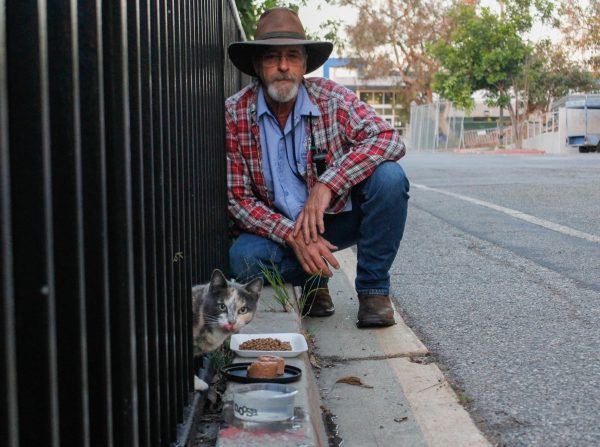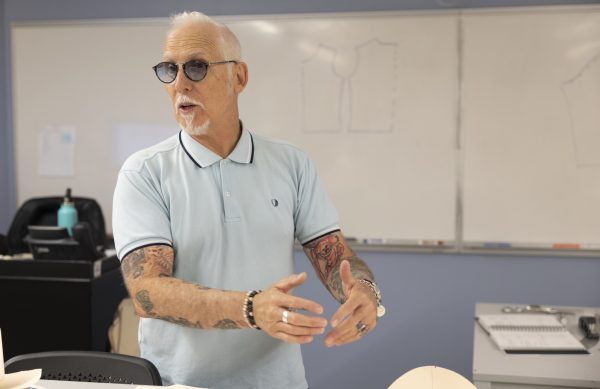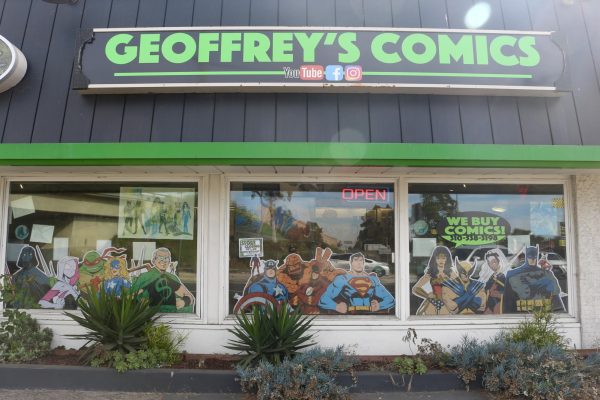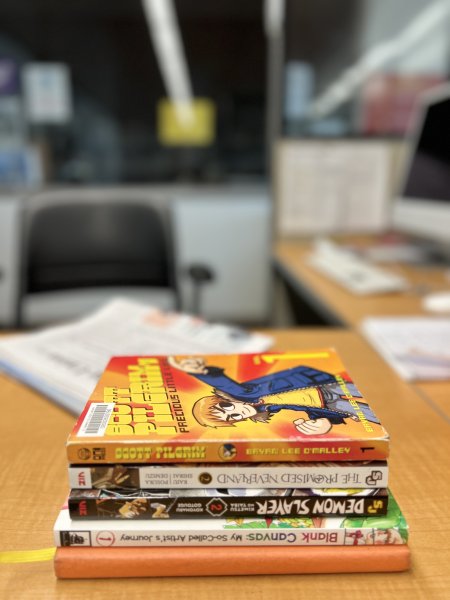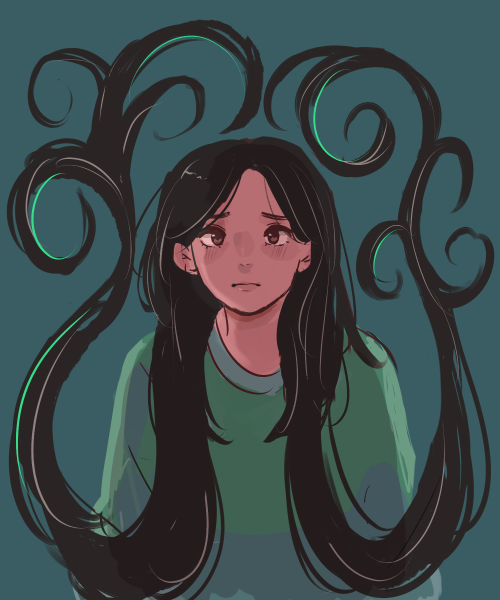From warrior to punk rock survivor
An unassuming yet commanding presence arrives 30 minutes early for a noon meeting at a business park in Culver City. He’s barely through the gate when life stories start pouring out.
Dreadlocks, long like vines, fall from a brown fiddler cap while round black-frame glasses sit in front of well-traveled blue eyes. A black T-shirt, ripped blue jeans and green Nike skate shoes match the youthful fervor of this music innovator.
His contributions to the West Coast punk scene since the 1970s are immeasurable. Helping to shape a scene that was so new, raw and aggressive has inspired countless others to do the same.
As a founding member of Black Flag, Circle Jerks and his latest band OFF!, 65-year-old Keith Morris is one of the most recognizable, widely revered and influential personalities in punk rock music.
Today, he is a singer, songwriter, actor and author who released his autobiography “My Damage: The Story of a Punk Rock Survivor” in 2016, but in 1974 and ‘75, then again in 1990, he was a Warrior.
“What’s the population of El Camino now? Did they open classes? Everything still online?” Keith says.
Discussing the status of online learning and limited classes taking place on-site due to COVID-19, he learns of the new campus construction and reflects on the old campus. He then confides that one of his handlers was hesitant about him talking to Warrior Life. They didn’t see how talking to his alma mater could make an impact.
“He at first was like, ‘Where are you doing it? Why are you doing it?’ And the situation is that I was a Warrior for five semesters and do I need to explain why I went to El Camino Junior College?” Keith says.
Notorious for being humorous, Keith jokes about getting a percentage of any profit made by a surge in enrollment arising from this article.
“Is my check in the mail? I’m just kidding, of course,” Keith says.
A lot has changed since his days as a Warrior. Though he was working on an associate degree in art, life had other plans in store that led him down a much more adventurous and unstable path.
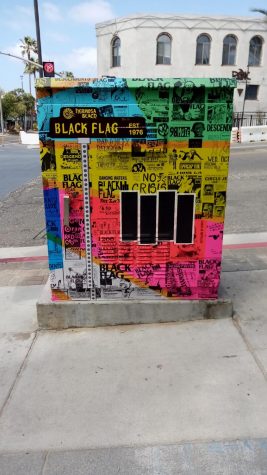
It all began with a friendship that developed in the city in which he was raised, Hermosa Beach.
Keith was born in 1955 at Kaiser Permanente Medical Center in Los Feliz and grew up in Hermosa Beach, where he attended South Elementary School and Pier Junior High School. In 1973, he graduated from Mira Costa High School in Manhattan Beach. Naturally, he excelled in art.
“I was in the process of receiving a scholarship from the Art Center out in Pasadena, one of the most prestigious art schools in the world,” Keith says.
While at Mira Costa, he submitted around 20 paintings to the Los Angeles County Fair. Ten were on display and he won a couple of gold medals. One was even used by the Automobile Club of Southern California’s Westways magazine. He didn’t keep a copy.
“I wish that I had it. That would be something that I would give to my mom and she would be really proud,” Keith says.
Several calls were made to Westways to obtain a copy, but attempts to locate the issue were unsuccessful.
One of Keith’s teachers was so impressed with him that at the end of the year, he submitted Keith’s name for the scholarship. As a requirement, Keith first had to evaluate all of his art classes, but there was a problem with another teacher and her class.
“It was basically just a real low-level art class. It would be the class that, like the stoners and the surfers and the girls that were on drill team that were not artistic, this would be the class that everybody would gravitate to,” Keith says.
He recalled getting up in front of his peers to evaluate the class and he didn’t hold back. He made this other teacher look bad. She raised her voice at him and names were exchanged. That was the end of the scholarship, but he already had his sights on becoming an art instructor, so he enrolled at El Camino.
“When I got to El Camino I got my ass kicked because I had certain classes that I loved where I would get As and Bs and then I had certain classes where – I [didn’t] want to be [there],” Keith says.
One example was Spanish class. He wasn’t doing well in the class and he questioned why he was taking it.
“It’s like, why am I learning Spanish? I didn’t know at the time that [almost] three quarters of the population of Los Angeles speaks Spanish,” Keith says. “If you’re going to be in the middle of it you better know about it. You better be slightly decent at carrying on a minimal conversation.”
Another of these classes was algebra, something that Keith struggled with a lot.
“One of my uncles explained to me, because one of his kids, one of my cousins complained to him like, ‘I’m taking this algebra class. Why the hell am I taking it?’ And he said, ‘Because it teaches you to use your brain. That’s the reason you take algebra,’” Keith says.
After learning about the Mathematics Competency Test that is now offered at El Camino and how it can be taken to satisfy a graduation requirement, he was intrigued.
“Do they do the same thing with English? Because English and science and math were my downfall at El Camino. I was going to El Camino because I couldn’t afford to go to UCLA or USC and I probably would’ve been pulling my hair out to get into either of those universities,” Keith says.
He was struggling with his classes and didn’t see the point of continuing. He was also partying, taking drugs, drinking and listening to loud music. School was becoming too difficult to keep up with and he eventually decided not to go back.
In 1976, Keith was working at his dad’s bait and tackle shop on Pier Avenue, which was right across from long-running jazz club, the Lighthouse Cafe. He was also working at a record store up the street. Rubicon Records is where he met his future bandmate.
Black Flag co-founder, guitarist and ECC alumnus Greg Ginn would go into Rubicon. Keith would turn off the radio-friendly rock of Bruce Springsteen, Fleetwood Mac or the Eagles and put on something heavier like Deep Purple, Aerosmith, Ted Nugent or Iggy and the Stooges while he talked music with Greg.

Greg is Keith’s polar opposite. While Keith is 5 feet, 5 inches tall, Greg is 6 feet, 2 inches tall, has a degree from UCLA and started a ham radio mail-order business when he was 12 years old.
“He was also a Deadhead—I certainly didn’t hold that against him. I’ve seen the Grateful Dead a couple of times. I own a couple of Grateful Dead records. I can hang with them,” Keith says. “A great song is a great song and it transcends any kind of genre or musical box.”
Up until that point, Keith and Greg were just acquaintances, but then they went to see Thin Lizzy and Gregg Rolie and Aynsley Dunbar-era Journey at the Santa Monica Civic Center. This event would end up being credited as the inspiration for Black Flag.
“Right after Thin Lizzy got through playing, during the break, Greg and I are looking at each other and the lightbulb goes on over our heads. Let’s start a band,” Keith says.
Neither knew anything about being in a band, but they knew musicians in the South Bay. Plus, Greg already had five songs. He picked up his guitar and started playing. Keith didn’t expect much, but the songs had energy and aggression like he’d never heard before.
They soon recruited bass player Chuck Dukowski and drummer Brian Migdol, rehearsed often at Greg’s house on Owosso Avenue, then later at the infamous old Baptist church on Manhattan Avenue. “The Church,” as it became known, had become a crash pad for local punks and outcasts.
The band played any chance they could get, including an eighth grade graduation party on Isis Avenue in Hawthorne with The Tourists. The Tourists went on to become Redd Kross, featuring future OFF! bassist Steven McDonald and future Circle Jerks guitarist Greg Hetson.
“I feel like it must’ve been magic to see those first shows, and there are still people around that talk about it like, ‘Yeah, we were there,’” Alex DiStefano, freelance writer for High Times, LA Weekly and OC Weekly, says.
Black Flag’s first real venue show was at the Redondo Beach Moose Lodge on Pacific Coast Highway, where Keith ended up grabbing and swinging from a hanging United States flag.
The war veterans chased him out of the venue.
Then, there was the infamous show at Polliwog Park in Manhattan Beach, where more than 1,000 people showed up and things got a little out of control.
Greg had convinced the director of parks and recreation for the city of Manhattan Beach that they were a light jazz band that played Fleetwood Mac covers. As soon as the loud music started, the picnickers pelted the band with whatever food and drinks they had.
“Polliwog Park was a turning point for us because our community didn’t really know about us. Now, the police did, you know. All of the police in the South Bay knew about us, like we were some kind of terrorist organization,” Keith says.
By this time, Black Flag had gained a notorious reputation and quite a following. Their iconic four-bar logo, created by Greg’s brother and artist Raymond Pettibon, was spray-painted all over town and the police harassment was constant.
Punk shows were getting shut down and kids were getting beaten with police batons. On one occasion, Keith was handcuffed and put into a choke hold until he blacked out. When he woke up, he was beaten, then taken to jail. He was released the next morning, bruised, but alive.
Keith appeared on the band’s first release, 1979’s quintessential “Nervous Breakdown” EP, a recording that features four songs clocking in at a total of just 5 minutes, 13 seconds.
His alcohol and drug use was heavy and the constant rehearsals were causing friction with Greg. Keith left the band later that year, but not before recording half an album’s worth of songs. Then in 1982, Black Flag released “Everything Went Black,” a compilation album in which Keith’s vocals appear on Side A.
Shortly after leaving Black Flag, he co-founded the Circle Jerks with guitarist Greg Hetson and drummer Lucky Lehrer. Keith later met bassist Roger Rogerson outside the Anti-Club on Melrose Avenue and the band was complete.
The Circle Jerks went on to release several albums between 1980 and 1995, including “Group Sex,” “Wild in the Streets” and “Golden Shower of Hits.” They’ve gone on hiatus off and on through the years, and during a break in 1990—Keith decided to return to school.
“While I was still doing the Circle Jerks and we were on a break because our guitar player Greg Hetson was off with Bad Religion, I decided ‘I’m gonna take a couple of classes. I’m gonna go back to El Camino,’” Keith says.
He decided to take an 8 a.m. vocal class and a beginning guitar class, which seemed logical considering the experience he had, having been in multiple bands.
“I thought having been in Black Flag and the Circle Jerks that I could take this vocal class to learn patterns and learn about, like proper breathing and you know, being able to vocalize to piano accompaniment,” Keith says. “I’m a screamer, I’m a vocalist, I’m not a singer and there’s a big difference.”
He didn’t think his class schedule completely through because at the time, he was bartending in Hollywood until nearly 3 a.m. He again found himself struggling.
“So I’m driving all the way back down to Redondo Beach where I was living, down on the Esplanade and getting home at 4 a.m. and having to be up at 7:30 a.m. to drive over to El Camino and find a parking space and try to be on time to the class— so I was just getting hammered,” Keith says.
He didn’t have the time, nor patience, to practice vocalizing and guitar so he eventually stopped attending.
“I think I came back for a couple more classes and realized I had two left hands. It’s like, we’re studying Andres Segovia and people of that caliber and I’m thinking of Tony Iommi and Mick Ronson and Keith Richards,” Keith says.
In 1999, Keith was diagnosed with diabetes. One evening, while on his way to check out a band at Amoeba Records in Hollywood, he blacked out while driving on Sunset Boulevard. He hit another car and was dazed, but alive.
Then there was another more serious episode in 2008. The band Turbonegro invited Keith to sing with them at the Øya Festival in Norway.
After traveling all day, he found himself with no food, and everything was closed. He managed to get through rehearsal and went back to the hotel where the cleaning lady later found him in a diabetic coma. He spent a week in the hospital and had been close to death, but slowly recovered.
Keith formed his latest band OFF! in 2009 with guitarist Dimitri Coats, bassist Steven McDonald and drummer Mario Rubalcaba. Their debut show was in 2010 at the South By Southwest Film Festival in Austin. They also played the Coachella Valley Music and Arts Festival in 2011 and 2015, the Vans Warped Tour in 2019 and the Musink Tattoo Convention and Music Festival in 2015.
“I never got to see Circle Jerks. I saw OFF! play, like years ago at this tattoo fest in Huntington Beach. He’s still got that energy, but it must’ve been cool to see Circle Jerks or Black Flag back in the day. I’m sure it was pretty awesome,” Alex says.
He wrote his autobiography with Jim Ruland in 2016 and it tells of his deep roots in Inglewood, which is where his grandparents lived. His mother went to Morningside High School and his father went to Inglewood High School. He also lived on Simms Avenue after he left Black Flag in 1979.
“Keith Morris is a local legend from his time in Black Flag and the Circle Jerks,” Rei Nishimoto, former freelance writer for Ghost Cult Magazine, Noisecreep and MeanStreet Magazine, says. “His attitude and the music he helped create has influenced many artists, whether they realize it or not.”
Together with Greg Ginn, Keith pioneered an aggressive West Coast style that produced quick bursts of energy crammed into songs that were mostly less than two minutes long.
“I saw him do the ‘Nervous Breakdown’ set at the Goldenvoice 30th Anniversary show in 2011, which was short, but sweet,” Rei says. “There are very few artists who can match what Keith helped create during that era.”
The Goldenvoice show was performed at the Santa Monica Civic Center under the name FLAG with former Black Flag members Chuck Dukowski on bass and Bill Stevenson on drums, plus the Descendents’ Stephen Egerton on guitar. This sparked a trademark infringement lawsuit by Greg Ginn, which was later dismissed by California’s Central District Judge Dean Pregerson in 2013.
In 2016, after decades of ignoring its status as the birthplace of West Coast punk, the city of Hermosa Beach memorialized Black Flag, the Circle Jerks, the Descendents and Pennywise with brightly-colored flyers wrapped on a utility box on the corner of Pier and Hermosa Avenues.
In 2018, a large mural was painted on a parking structure at 13th Street and Hermosa Avenue featuring a young Keith Morris and other notable punk icons.
“Keith Morris is for sure underrated and a lot of times people don’t realize the whole connection with Black Flag,” Alex says. “He’s probably up there as one of the most influential punk singers ‘cause he was in both Black Flag and Circle Jerks.”
The Circle Jerks had planned a 2020 tour to commemorate the 40th anniversary of their debut album “Group Sex,” but then COVID-19 hit and put those plans on hold.
Discussing the pandemic and the accessibility and ease of taking online classes, Keith reveals he may not be done with school just yet.
“Well, I’m thinking about going back to junior college, but I’m not going to drive all the way down to El Camino. When I get ready to go back, I’m going to go to LACC (Los Angeles City College). I can walk there. It’s about, I would say it’s probably about a 10 to 12 minute walk from where I live,” Keith says. “And there’s nothing wrong with community college.”
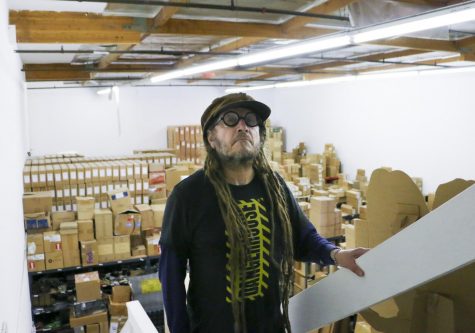
His autobiography gives more harrowing details of car crashes, addictions, run-ins with the police, volatile relationships and his battle with diabetes. Through it all, Keith has lived by his own rules. And he’s been sober since 1988.
“I’m happy to be alive,” Keith says.


